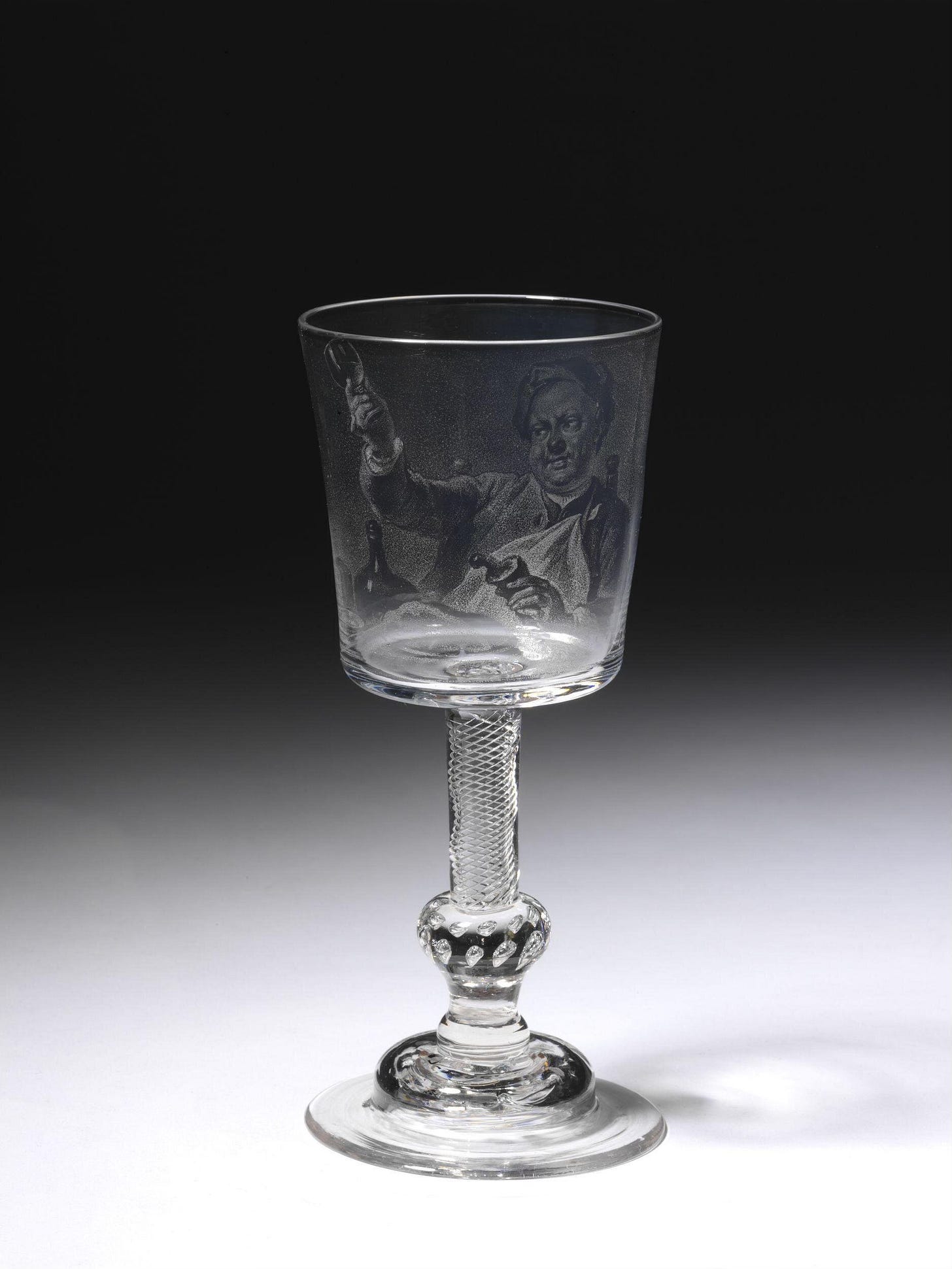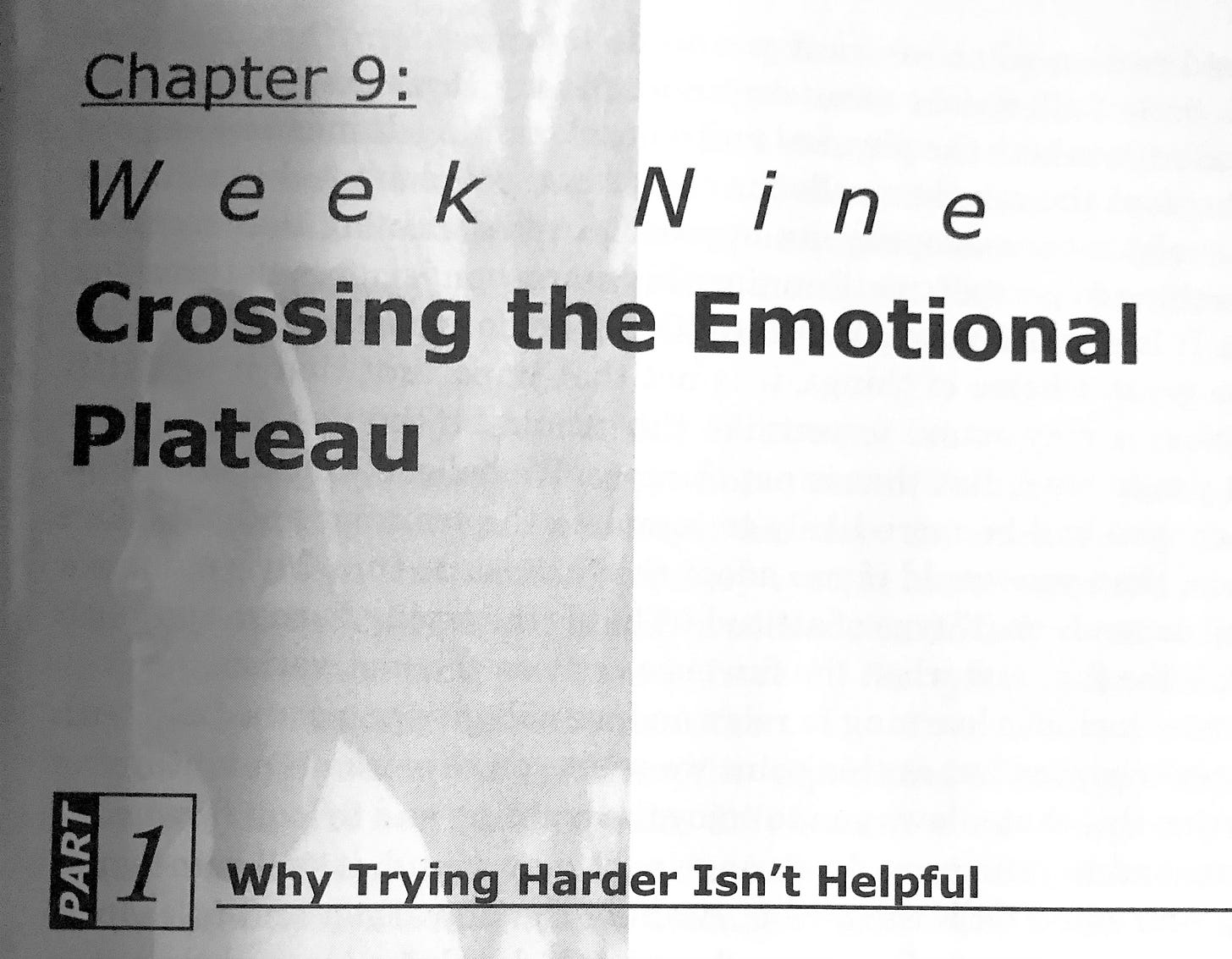The Feeding
As the name would imply, I'm here for the tastes. All the tastes...including a 2000s throwback, free books, and the hottest blown glass.
Firstly, thank you for coming with me on this little pursuit I call ‘Foul Aftertastes’. If you like what I have compiled - or appreciate the recommendations below that make brief mention of quick meals, bad objects, and Nelly Furtado - then I would ask that instead of spamming ‘your strangers’ (followers, apologies) on social media, please do forward this newsletter to a G-OO-OO-D FRIEND.
It is a joy to get to write to you. It is a joy to get to write.
Dear Reader,
Recently, I came across the idea that there are different hungers, and therefore, different kinds of nourishment. The author separated the hungers into nine types:
Mouth hunger, eye hunger, nose hunger, touch hunger, stomach hunger, mind hunger, cellular hunger, and heart hunger,
And with each type, suggests that there are different methods of feeding them.
False taxonomies aside, I liked this idea because it made me realise that feeding ourselves (myself), is often like partaking in a sledge-hammer of sensation. It is all just eating. All just hunger. Quick, slow; whatever. Despite a minor fascination with the wordsmithery1 of the food critic whose fine art is the description of putting other people’s art into the alimentary canal, I’m not a gourmand.
I’m aware this nine-pronged division of hungers can border on the absurd. When I first read it, I found the delineation a bit bloodless, a kind with the trite niceties that get written about subjects that are laden with complicated feelings. Food is not nearly as polite, or cleanly sexy, or pleasantly simple as marketers of any creed would like to pretend. My mind being what it is - favouring a vision of the world befitting Melanie Klein and her love of the projectile-having, hating baby - within a short time of reading of the hungers, I was evoking mental images of an unknown but earnest man, who was sat at his dining room table, spooning baby-food not into his mouth, but onto the lubricated surface of his eyeballs, ever hopeful of satiating the avaricious hunger of eyes.
But despite my native cynicism, I chewed on the idea, or the idea chewed on me, and at some point, the effort formed into something beyond mere mastication. I liked the different hungers because they gave name to cravings that, if they are to be well-satisfied, should have different words. People often want from food the kinds of things they want from people, and bigger still, from all of life; comfort, love, warmth, recognition. The hungering bring to consumption much more than the hopes of a satisfied meal. When we eat, we’re not only chewing, parsing a matter-of-fact fuel. Nor is the delight of chewing just for the distraction of taste. When we are tasting, we are feeling, and digesting, and absorbing, and so on. Food is more than the scouring for energy. Food is more than aesthetic enjoyment. Food is a full-bodied, temporal experience used to serve a body that is multiply possessed by hungers.
Now, for a swerve…
To keep it current - lol - this made me think about the particular dilemma of the newsletter writer, which is:
To recommendation, or not?
I mention this question as I think there is something akin in the industry of ‘recommendations’ and the aforementioned sledgehammer of sensation that is consumer capitalism’s imagined food. Because the aim of the ‘Recommendation’ genre is so often to possess you with the spirit of clicks, in the hopes that you will buy shit, many authors seem to deny themselves and the reader the chance to get to stew for a second on this weird thing that we do, consume. Why are we so hungry? Why is it that our eyes, minds, noses, hearts, and all the other organs and systems require so much fuel? Is it all necessary to sustain this life? How much is the pleasurable wrapped up in that constant necessity that is being well-fed?
This is my introduction to a new sub-section of our newsletter, which I am dubbing the experiment in ‘recs’, which is really a dispatch of a single human’s attempt to nourish themselves, which is really a remix of the nine hungers and some remarks on the (in)delicacies of tastes. I don’t think I will be spooning baby-food into my eyeballs, nor urging you to madly click. But if you have a minute, maybe you’ll ask yourself what it is that you are craving, and how much of that we could share?
If you do share in it, whatever it is, tell me about it. The email’s are open. I read them all, and worse still, I’ll respond so long as your message has enough sprinkles of humanness (read: kindness).
One of my favourite ways to procure books is from free book stands. I love to trawl through the one at my local Tesco’s. I do this with a ritual passion.
It is four shelves of utter randomness, presided over by shoppers who lean over their trolleys in butt-to-the-air repose as they scan a selection that is as aberrant and weird as you would expect. The anti-curation of donated goods means that the shelves are stacked with a chaos of mixed messages; popular paperbacks, many books by a well-known cult leader, classic tomes and bizarre instructionals. My best finds thus far: The Non-Marathon Runner’s Trainer (image below), Chekhov: Five Plays, Bowlby: Attachment, and Austen’s Mansfield Park.
For those of you without this peculiar invention of a profligate world where books don’t matter, in the spirit of opposites, one of my favourite curated versions of excellent things for the grey matter is Jessica Stanley’s READ. LOOK. THINK. I subscribe because the embedded arrows always seem to hit the centre of my very particular Venn diagram, which could be described as the curiously related zone between ‘the journalistic hot take’ and ‘sturdy contemporary psychoanalytic thought’.
Where do you get your best and weirdest items of curation and anti-curation? What are your most unlikely collisions, and who are the people who nourish your inner niches?
I had a serious 2000s moment driving in the car on a sunny weekend. The ancient Nissan’s speakers sing like a distorted death rattle, which means I drive in silence. But, in a rare moment, I turned on the cringe of Magic FM, and I heard the hot, heavy air get light, as the saccharine warble of Nelly Furtado’s ‘I’m like a bird’ echoed out.
This song, in the sunshine, barely holding together through the metallic distortion, reminded me of the all songs of childhood that I had recklessly ingested into my soul. What was I doing as a kid wishing for the kind of pop freedom that Furtado was singing about? What did that even mean, to wish to be like a bird, as a kid? Yet, it made my mind spin with old feeling; and also ache with the awareness of my musical incompetence.
I like what Furtado said about the song in an interview in 2006 for its humble recognition of the power of a single hit:
"I've heard it sung at karaoke or by cover bands and it was awesome — I was like, wow, I've got one of those songs. Somebody once called it a 'hairbrush song', one that girls and guys sing in front of the mirror with their hairbrush. I just think I'm lucky I have it — it's paying the bills!"
It’s nice to read things post-fact/post-feeling, but driving down the high street - the phantom image of a hairbrush in hand, hearing my own voice fill in the audible gaps from the car’s speakers - I thought about the reoccurrence of y2k in fashion, and wondered if all the kids in their baggy, distressed jeans were also listening to Furtado and feeling that same defenceless flying feeling, but for the first time?

One of the best places to go hide out for an afternoon is the ceramics and glass section in the V&A in London. It is free. No one is there. And you can go spend hours looking at delicate things that once touched someone’s lips. The elegance of a well-blown wine glass is a heady intoxicant, their empty shapes powerful visual reminders of cold-warmths, delicate surfaces dripping in hot hands, and it is easy for the eyes to end up very drunk, very quickly spanning the museum’s extensive cabinets. Some of my favourite things are the gathering of 18th century air twist wine glasses, which get their name from the helter skelter of air trapped in their stem, which became a minor internet sensation after they were copied for the television series, Outlander, by two glass blowers who ply their trade to the TV people, but refused to blow a couple for me.
For those less nerdy, who prefer to avoid museums, and the email inboxes of replica glass blowers, I recommend pouring your irises over Miranda Keyes’s glass works, enjoying the fuck-off luxury of her wares that seem to taunt one’s lips with a molten hatred, while demanding to be bitten. I’m curious how thick the glass is, and what that variation does to mouth feel, but for now, I just peruse, glass to eyes, eyes to glass…
Thank you for reading, imbibing, digesting, returning to the feeding. Till next time…
For the curious or greedy, who want to read food criticism, I suggest searching out the traditional dogs at the food table, M.F.K. Fisher, A.J. Liebling, and their contemporaries, Rebecca May Johnson, Jonathan Nunn, Jago Rackham.








